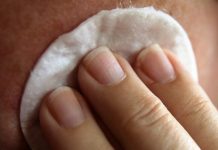Surgery and burn scars can be the most visible scars on the human body. When the skin has been broken, the body attempts to stitch it back together, but the new tissue, commonly called scar tissue, or just scars, can cause more problems later on. These scars are called keloid scars. Keloid scars can spread and grow, and the person might need more surgery later on to remove them.
The size and type of scars depend largely on the incisions the surgeon has made during the surgery. Normally, deeper incisions will leave bigger scars, which are bound to be visible on the body. In this case, not only will the wound take more time to heal, but the resulting scar can begin to spread on the surrounding tissue, and become an abnormal, or keloid, scar. Of course, in normal situations surgeons attempt to minimize the amount of scarring; however, there are situations when they need to be hasty, for example, if the surgeon performs an emergency operation, or if they are trying to save somebody’s life. In this manner, even successful surgeries can leave a scar that can complicate things further for the patient. It presents the need for patients to be properly informed and educated on scar treatment.
However, patients that have been left with visible scar tissue often feel self conscious about their appearance and the visual impact the scar will have on their bodies. Often, when patients ask for help dealing with the cosmetic appearance of scars, surgeons and other medical staff, who are not concerned with such matters, will not provide enough information. In most cases, patients don’t know when to start treating their scars, how to properly tend to their wounds to minimize scarring, especially if they need help with scars that relatively small and do not run the risk of becoming keloid scars.
The development of scars
Scars develop during surgery when both the outer and the lower layer of the skin, the epidermis and the dermis, respectively, are penetrated, or otherwise damaged by burns. After the injury or the surgery, during the healing process, the scars will develop differently, depending on the person, the situation and the treatment. There are many factors which affect the development of scars, including, but not limited to the quality of the surgeon’s incisions during the surgery, the patient’s genetics and their bodies: age, health, and natural healing capability can drastically influence the healing process, followed by the location of the wound, and other factors can affect the scarring. In general, scars that have developed on skin with less tissue, like the collar or chest bones along with skin above moving joints, like the knee, have tendency to develop keloids and become a problem later on. The body excessively produces cells commonly called fibroblasts, as well as collagen. The fibroblasts will repair the broken skin layers, and the collagen that is released is what makes the scar appear raised over the surrounding skin. If the collagen continues to be produced after the scar has developed, the scars become hypertrophic, and extremely noticeable, as they are not only raised above the skin, they also become red or purple colored. These types of scars also become overgrowing and abnormal, and can take more than 12-18 months to heal.
When to start treating the scars with scar treatment cream
In order to ensure that the scars don’t become hypertrophic and form keloids, scar treatment needs to begin the moment the wound has properly healed. Applying scar treatment cream is highly beneficial during this period, because it will enhance the healing process and reduce the risk of abnormal scar development. Using scar treatment cream in the first six months after the wound has healed will show substantial improvement on the scar itself. The scars will be lower and not deform the skin as much, and using scar treatment cream will lessen the chance of the scars becoming red or purple.
Scar creams can be usually bought over-the-counter at pharmacies. Plenty of dermatologists, experts and medical professionals advise to use scar treatment cream after surgery. There are plenty of types of scar creams and gels, but silicone based ones have been proven to be most effective.
The silicone materials used in silicone based scar creams will not only reduce the amount of scar tissue, but they will also prevent the formation of hypertrophic and keloid scars. Silicone based scar treatment products can also come in the form of sheets, but they are very difficult to keep attached and can cause discomfort, which is why silicone based creams are a better option.
Silicone products are able to reduce the visibility of the scar. Also, using silicone based cream on the scar will improve the scar tissue’s elasticity, as well as reduce redness, especially if it’s used in the first six months after the wound has healed and the scar has begun to form. The silicone will also aid in removing other symptoms of scarring, like itching, pain and irritation of the skin.











